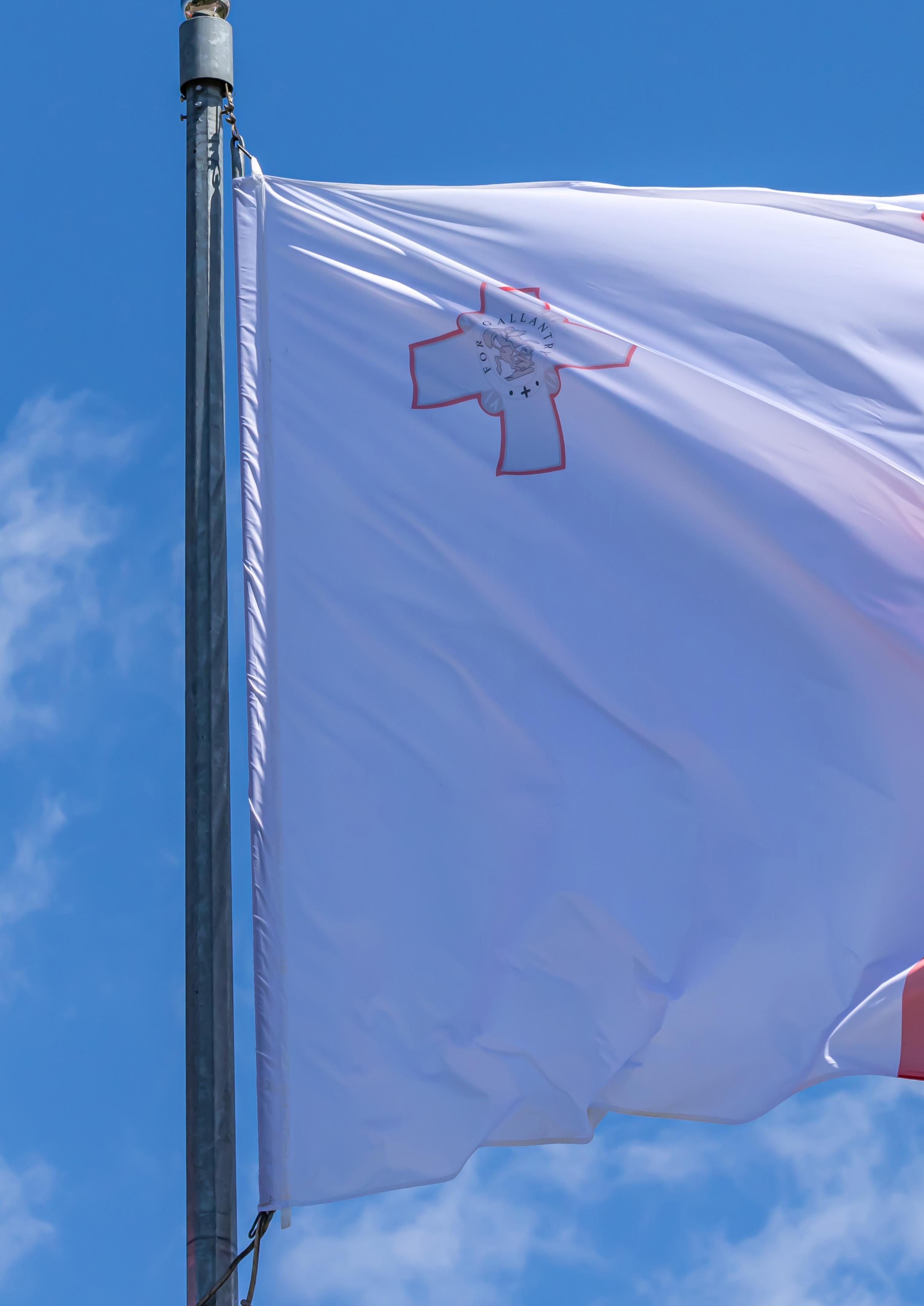
2 minute read
Celebrating Victory Day
MALTA’S RICH HIS TORY OF ROWING
Traditional regatta competitions are now held twice a year, on 31 March to
commemorate Freedom Day and 8 September to honour Victory Day
By Terrence Mifsud
The Victory Day ‘Regatta’ commemorates the end of the Great Siege of Malta in 1565, the end of French
rule over Malta in 1800, the armistice that ended the fascist dictatorship in Italy in 1943, and the end of the Second World War Italian bombing of the Maltese Islands. Nevertheless, Malta has been organising the regatta since the Middle Ages, while the first competitive rowing event was held In 1955. The Grand
Harbour is the location of the rowing racing route, and Fort St. Angelo serves as an arresting background to the svelte rowing boats.
The competition's concept is quite straightforward yet still fascinating. In two divisions, rowers from seven different clubs participate. Professional rowers compete in the "Open" Category, whilst aspiring, inexperienced rowers compete in Category "B." Each category consists of five races, and the club with the most points after those five races wins that category. Each race's top three finishers receive an allocated number of points, and at the conclusion of the regatta, the club with the most points is given the Aggregrate Shield. There are a few clubs which are renowned for their presence in the rowing community. Teams such as Cospicua, Kalkara, Marsa, Marsamxett, Senglea, Vittoriosa, and Birzebbuga always show up with their traditional Maltese boats to compete. The clubs may be identified by their distinctive colours, which for Birzebbuga comprise of red, white, and blue; for Cospicua, light blue; for Kalkara, green; for Marsa, red and blue; for Marsamxett, yellow; for Senglea, red and yellow; and for Vittoriosa, red.
MALTA’S RICH HIS TORY OF ROWING

Intersetingly, the resumption of the Olympic Games as we know them did not precede the traditional Maltese rowing technique. It might be viewed as an amalgamation of different rowing rechniques used in the UK, notably in the South West of England, and Italy, which over time practically merged into a Maltese specialty. In a work by Pawl Castagna (1865–1890), the Victory regatta is described as having four distinct events. These events are the
four-oared caiques, the two-oared, fouroared passenger boats, and the fouroared fishing boats. Traditional regatta competitions are now held twice a year, on 31 March to commemorate Freedom
Day and 8 September to honour Victory Day.
While the rowing competition is mainly a male-dominated sport, women’s races have been held in the past, with one of the most recent being in 2018. The winners of this event also receive the special Aggregrate Shield, which they get to keep for a year.
For the races, tens of thousands of spectators have congregated over the years near the water's edge and the nearby bastions. These rowing races remain quite popular on feast days till this day, especially in the communities and localities near the Grand Harbour.











